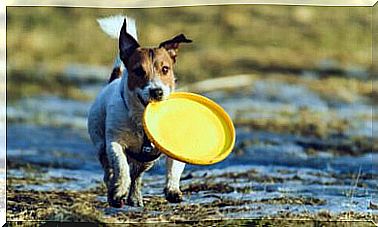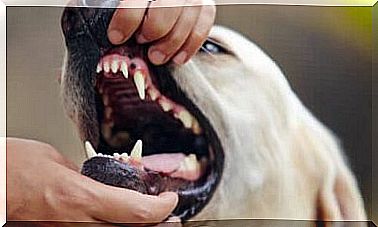How Old Should A Dog Be Neutered?

All pet owners will have wondered: how old should a dog be neutered? Recent studies reveal that choosing the right age to neuter or spay a dog may not be that simple.
The benefits of spaying or neutering a dog
First, we must recognize that spaying and neutering are strongly associated with a longer life expectancy. Life expectancy is known to increase by 26% for spayed females compared to females who can still reproduce. In neutered males, life expectancy increases by 18% compared to others.
Life expectancy increases because gonadectomy substantially reduces the risk of death from various diseases (some types of cancer, trauma, infections, etc.).
This benefit is greater than the risk associated with certain problems, such as other types of cancer and orthopedic problems.

How old should a dog be neutered?
The procedure is usually done at a young age, at two to three months. Commonly, this happens in abandonment rescue situations and in animal shelters. In this case, the goal is to control the growth of the canine population.
In this scenario, it is imperative that the pets cared for by these organizations do not contribute to the overpopulation of pets. Once adopted, compliance with the castration commitment is only 40%. For this reason, it is reasonable to spay or neuter a dog before adoption.
It should be noted that this practice is aimed at population control and combats the problem of animal suffering and public health.
Although considerable research has been done on the subject, some of it contradictory, there are many doubts about the safety and long-term effects of the procedure at an early age.
Is there an ideal age to neuter or spay a dog?
The risks and benefits of age-associated gonadectomy is an ever-evolving medical area. Undoubtedly, as new information becomes available, the current recommendations will be reviewed and re-evaluated.
- Small dogs, less than 22 kilograms expected in adulthood: the recommendation is six months in males and before their first heat – 5 or 6 months – in females.
- Large dogs, weighing more than 22 kilograms expected in adulthood: the recommendation is less precise.
In males who are neutered when they are older, the risk of certain types of cancer and orthopedic problems is reduced. However, some behavioral issues may need to be addressed.
In females, spaying in adulthood can reduce the risk of some cancers but increase the risk of others. It can also reduce the risk of some orthopedic problems.

The case of large dogs
A recent study on the association between age and gonadectomy performance, conducted in 450 dogs trained for domestic purposes, established that the optimal ages for gonadectomy are:
- Dog from a shelter: before adoption (from 6 weeks of age).
- Small dog, male or female: before 5 months of age.
- Large breed female dog: before 5 months of age.
- Large breed male dog: before 5 months of age.
- Large breed male dog: 7 to 11 months. Alternatively, 15 to 18 months.
In summary, after analyzing all the pros and cons, the recommendation is to follow the practice of spaying or neutering a dog between five and six months of age, which is valid for most dogs.
As with anything else, there are exceptions to each rule and we encourage you to discuss all issues and concerns with your vet to make the best decision for you and your pet.









